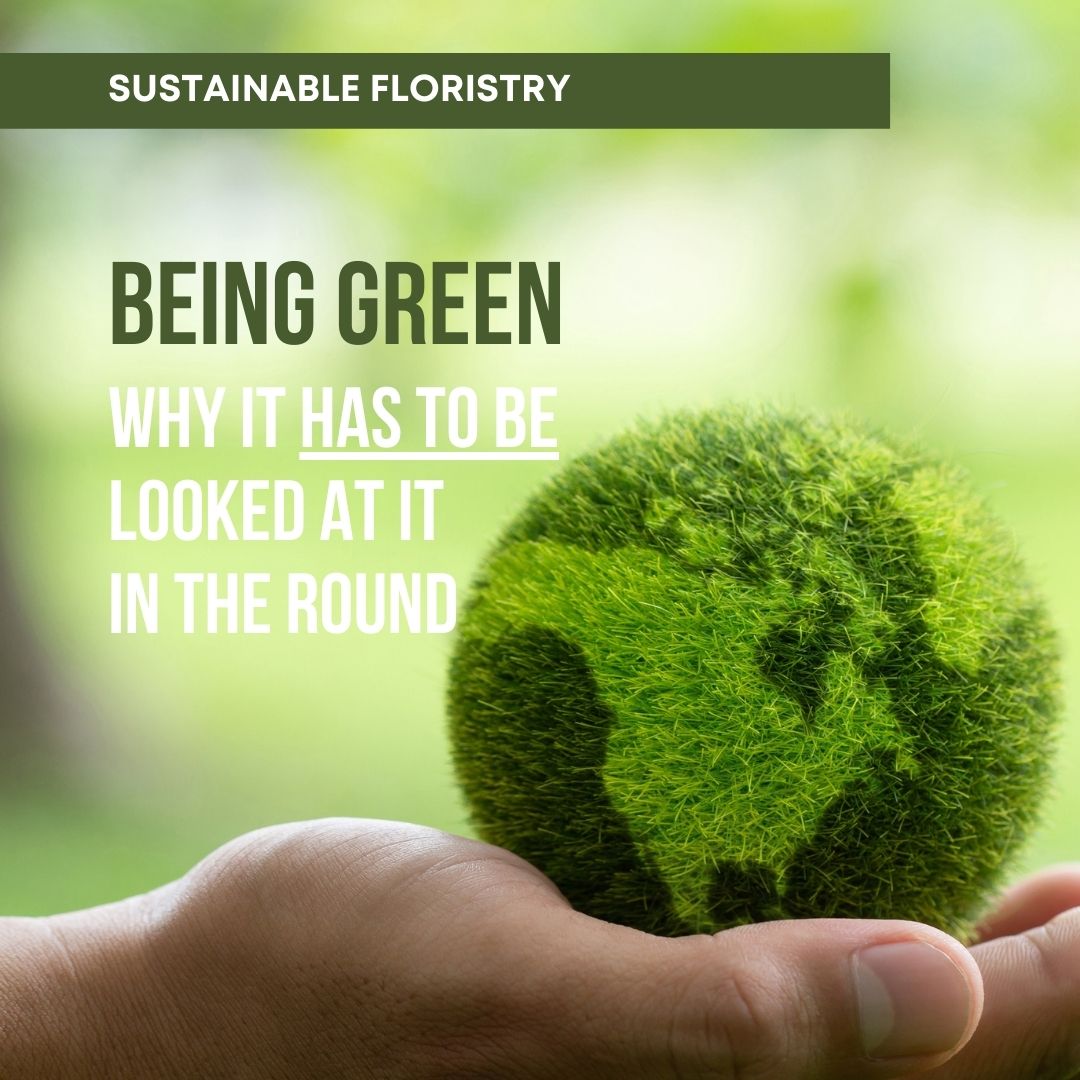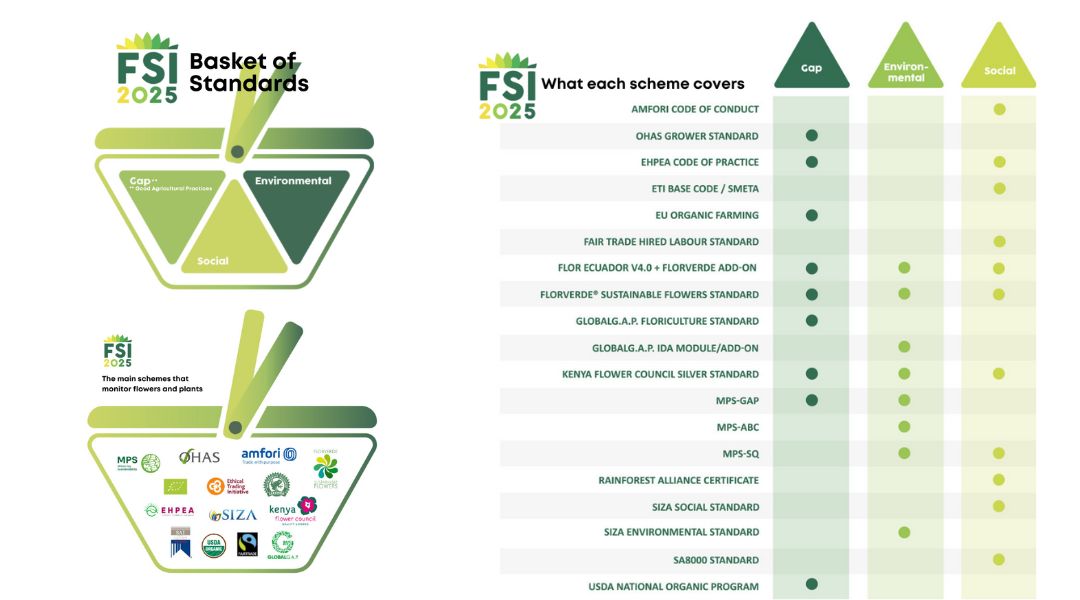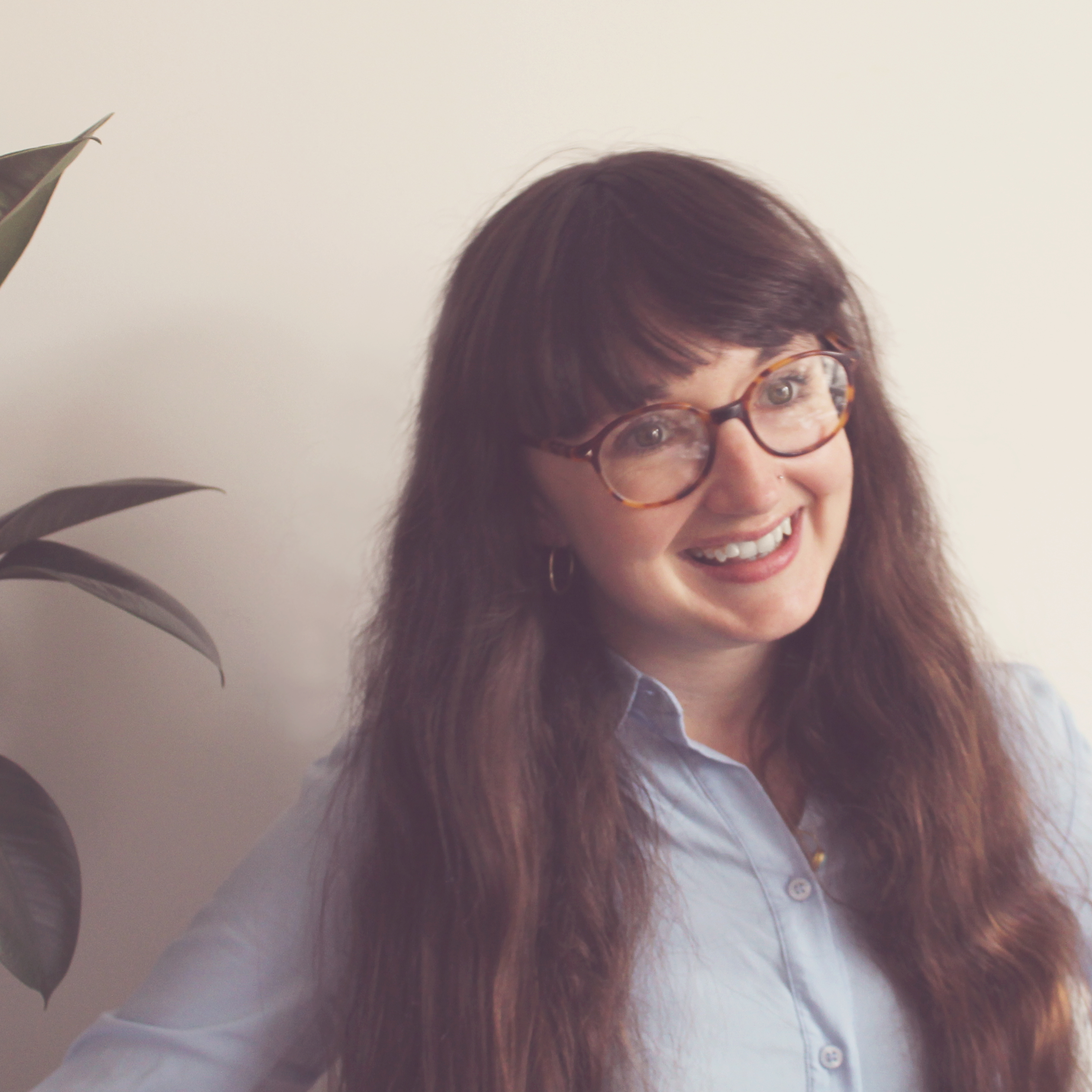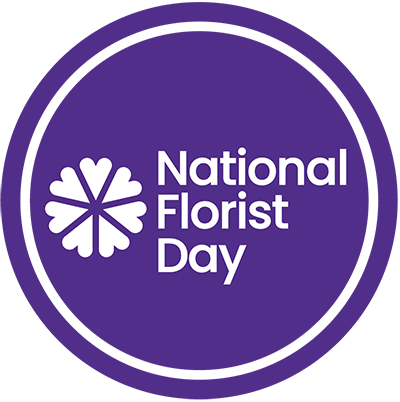Sustainable floristry ... more than just the foam
 Sustainability has become a buzzword for business, but what does it really mean for florists, what’s changed over the last few years and is it only about foam?
Sustainability has become a buzzword for business, but what does it really mean for florists, what’s changed over the last few years and is it only about foam?
Hannah Dunne has worked in the flower industry for 15 years, and is currently studying at Royal Holloway, University of London on an MSc in Sustainability and Management, with a focus on floriculture as well as working with the Fairtrade Foundation.
With such a bespoke knowledge base she returns to The Florist with a special and holistic overview on the latest progress, challenges, and trade-offs to show that whilst there isn’t a simple answer, a lot of little changes can make a big difference.
The climate change impact
In 2022, the Intergovernmental Panel on Climate Change (IPCC) confirmed climate change is already prompting more heatwaves, droughts, and floods.
In turn that has caused severe food and water shortages for millions of people who rely on small-scale agriculture to survive, especially in Africa, Asia, Central and South America – home to the highest number of people living in poverty and also some of the biggest flower producing countries.
The situation is immeasurably unfair: it’s those people who are least able to cope, and who have contributed least to the problem, who will be worst affected by climate change.
Transport: airmiles, trade-offs, and Covid-19
Given some 85% of UK-sold flowers are imported, the emissions caused by transportation do contribute to the climate problem. The flower sector itself is experiencing climate impact, as East African flower farms have already faced seasons of unusually severe rains and droughts which have affected their ability to grow stems.
Whilst in theory a ban on imports could bring positive change in terms of climate impact, there’s a big trade-off.
Flower exports are contributing to economic growth in several developing countries, as factors like their location near the equator provide optimal conditions for flower growing. Millions of people now rely on the global flower trade for employment (direct and indirect), including two million in Kenya alone, the biggest flower exporting country to Europe followed by Colombia.
About half of Kenyan cut flower airfreight is exported as belly cargo on passenger aircrafts, that figure rises to a predicted 80% for Colombian flowers.
In 2020, this meant Covid-19 lockdowns caused a huge reduction in airfreight capacity. The majority of flower farm workers in developing countries are women, thousands of whom lost their jobs due to the disruption, without furlough schemes for protection from poverty.
Last year, in a bid to build resilience against this, the Dutch, Kenyan and UK governments conducted studies on opportunities in sea freight specifically for carrying cut flowers from Africa to Europe, one of which showed potential for reducing carbon emissions by 84% to 95% in contrast with air freight. Meanwhile, sea freight capacity from Colombia – one of the first countries to introduce it back in the early ’00’s - continues to make fast progress.
Energy use in the greenhouse
A large portion of flowers imported to the UK are grown in Holland, bringing different challenges. Large scale, year-round operations in Holland – and indeed those in the UK – usually involve energy-intensive greenhouses for heating and lighting, which also create emissions.
Investments in technological advances have led sustainable progress here, for example, a rising number of European producers now use reusable energies and climate screens.
Dutch flowers usually reach the UK via truck through the channel tunnel. Academic studies have attempted to quantify the climate impact of a Kenyan flower (natural production with airmiles) versus a Dutch flower (energy-intensive production with lower transport emissions).
One study claimed the Kenyan option has a lower climate impact as it actually produced less CO2, although others refute this, arguing it didn’t consider wider environmental factors at play, like pesticide use. It’s an incredibly difficult footprint to measure, particularly when including factors such as the social impact, i.e., that flowers can put food on workers’ tables, provide education, medical care and housing.
Keep chemicals in mind
Much of the flower industry is reliant on agrochemicals used in pesticides, fumigants, fertilisers, and post-harvest treatments, which, if used irresponsibly, can harm local ecosystems, cause air pollution, release ozone-depleting chemicals, and damage the health of farm workers.
However, there’s a wealth of research and progress going into alternative methods including use of natural insects and organisms, and many growers around the world are now signed-up to standards that vet the use of chemicals, with accreditation for those using them safely.
Sourcing sustainable imported flowers
Some standards and certifications are criticised as they can be difficult or expensive for smaller growers to obtain, but they’re still arguably the easiest way to be sure you’re buying sustainable imported flowers. With standards, flower farms are audited and certified when they meet certain sustainability requirements, and without them, it’s harder for growers to get products into the UK.
More than a dozen standards operate across the global flower sector, including famous consumer-facing schemes like Fairtrade and Rainforest Alliance, but important names within the trade also include MPS, Florverde, and GlobalGAP. You can look out for their labels on packaging or ask your wholesaler to source them.
Unfortunately, tracing them is not currently the easiest process, as flowers are often rewrapped, but supply chains are slowly becoming more transparent – florists can add pressure towards wholesalers to improve this. For more information, check out the Floriculture Sustainability Initiative (FSI) and its ‘basket of standards’ which will show you the various marks to look out for and what each of them achieves. 
Being a climate-friendly florist
In short, all this complexity means the most climate-friendly way to buy flowers is from a local farm whose blooms are grown in season without reliance on lots of chemicals or heated greenhouses. The huge growth in the Flowers from the Farm (FFTF) collective is credit to this, so it’s well worth checking the FFTF map and contacting your nearest members.
However, artisan growers have limitations as many only operate from spring to summer, and they can’t always offer the varieties and flexibility demanded by today’s mass market.
So, for many commercial florists, being climate-friendly means making thoughtful and nuanced changes to any business activities that can cause harmful emissions both throughout the supply chain and within the business.
For example, Cornwall-based florist Petalon recently announced a move to become carbon neutral with a scheme that tracks every aspect of the business, minimising emissions where possible but offsetting them when not possible. They share a thoughtful blog about the process here.
You can make climate-friendly changes in your business too.
For example, are you conscious of keeping energy-zapping appliances turned off when they’re not needed – from lightbulbs to computers to your flower cooler?
Are you minimising emissions from your own transportation, for example, with efficient delivery routes or electric vehicles? It’s not only environmentally good but can save money too.
Considerations around your supply chain can include thinking about standards and certifications, airmiles and modes of transport, but it’s important to think about the social impact as well.
Protecting people and economic security
Social impact issues
While economic growth can pull people out of poverty, if unregulated, the boom in globalised trade can also bring harm to workers involved. Newspapers have reported on malpractice at unethical flower farms in developing countries, where legal minimum wages are often well below living standards if existent at all. Welfare issues include poor pay, long hours, and gender discrimination, as well as health concerns caused by excessive work and exposure to agrochemicals.
However, flower farms certified by social sustainability standards have led to a great improvement in quality of life for local communities. For example, at Fairtrade farms, a Premium is invested in projects chosen by workers. About 80% of flower workers choose to spend it on education for themselves and their families, empowering future generations. In Colombia, the Florverde programme – started 25 years ago – has done similar work.
How to avoid unethical flowers
To do your bit in making sure unethical farms don’t succeed, try to only buy flowers that carry one of the standard marks like Fairtrade, Florverde, and MPS. And if you are not sure, pressure your wholesaler to tell you – they should be able to find out.
That said, we know that exploitative farms do not represent a large portion of imports into the UK, thanks to campaigns by organisations like FSI. Indeed, Executive Officer Jeroen Oudheusden told us,
“I’m 100% certain that UK florists are already buying certified flowers without knowing it,” be it due to a lack of labelling or suppliers not passing on the information”. In short, chances are you are doing the right thing but if in doubt ask your wholesaler to confirm.
Making sustainability profitable for all
It’s a contentious one, but economic growth is one of the UN’s 17 Sustainable Development Goals (SDGs). Most governments broadly agree sustainability is centred around three pillars: environmental (Planet), social (People), and economic (Profit).
Sadly, focusing on just one of the pillars, or just a couple of the SDGs, usually brings trade-offs for the others, so they have to be viewed as an interconnected system.
Most members of the global flower community rely on profitability, or at least financial security, simply to get by – be it florists on UK high streets or farm workers in the global South.
That’s why it’s vital to understand the capacities of the businesses involved and consider these issues with a thoughtful, holistic view.
Protecting natural resources & biodiversity
As well as climate change, environmental sustainability also involves factors like responsible resource use, including non-renewables used in plastics as well as water and waste.
Agrochemicals and water management
Protecting natural biodiversity is important both above ground and under the sea. Kenya is home to Lake Naivasha which became notoriously polluted by agrochemicals during the initial boom of the country’s flower trade, depleting fish for local people.
Now, key representatives for the sector claim to have acknowledged these mistakes and are aiming for progress, for example, with the sustainability standard from the Kenya Flower Council (KFC).
Generally, the global flower industry demands huge amounts of water. Conscious growers are now investing in methods for water treatment and reuse. You can also give more consideration to your own water use, for example, with a water butt for plants.
Sundries, packaging, and floral foam
Protecting biodiversity is also the main driver behind campaigns against floral foam, as it is made of microplastics that harm marine life. Many sustainable floristry advocates are happy to share advice on mechanics, on Instagram follow #nofloralfoam for inspiration.
However whilst there are creative methods for avoiding foam altogether (wire, moss, twigs, and tools like Kenzans and FloraGuppy), it’s important to remember this is usually far easier for wedding and event florists who tend to have more eco-conscious clients, bigger budgets, and more time to spend on making.
For retail florists and those catering to mass market, switching from plastics is vastly more difficult as they face higher outgoings, lower margins, more time restraints, and tougher competition.
For example, some high street florists need to guarantee arrangements will last a certain number of days to be able to compete, so it’s much harder to take risks with products that might lead to designs collapsing, spillages, or poor water uptake during the journey home.
However, more sustainable products are constantly coming to market, so all florists should keep an eye out and don’t give up on trialling. This includes Bioplastic cellophane, Bioglitter, the foam-alternative Agra Wool, and the OASIS® BIOLINE® series. You can see our feature on the new OASIS offerings here. You can also change from plastic picks to bamboo, ditch traditional ribbon and use Paper or Jute instead - there are now even bamboo mossing pins.
Minimise waste and embrace promotional opportunities
Some reports claim the floriculture sector produces as much as 100,000 tonnes of plastic waste each year. Meanwhile, every flower binned is another wasted strain on the planet’s resources.
Internationally, schemes are ongoing which aim to minimise flower waste, such as Kenya’s Flower Watch. Locally, florists can keep a waste log and analyse patterns to avoid future throwaways – positive for profits as well as planet.
You can also consider combining resource use with sales promotions; for example, offering jars of discounted flowers that are nearing the end of their best, or discounts for customers who bring their ‘fill your own’ containers thereby minimising packaging waste.
It’s also well worth considering other consumer promotions to raise awareness of sustainability issues, and show the steps your business is taking, however small – because becoming more sustainable is an evolutionary process that requires understanding and collaboration between every member of the supply chain, right through to consumers.
Whatever you do though, please don’t ever think it won’t count or isn’t enough.
The truth is a lot of baby steps by everyone can collectively make a big difference.
About the author

Hannah Dunne has worked in the flower industry for 15 years - including several at Florist Trade Magazine - and has spent a large majority of that time researching sustainability issues within the sector. She’s currently studying an MSc in Sustainability and Management at Royal Holloway, University of London, where her work is focused on floriculture at every opportunity.






